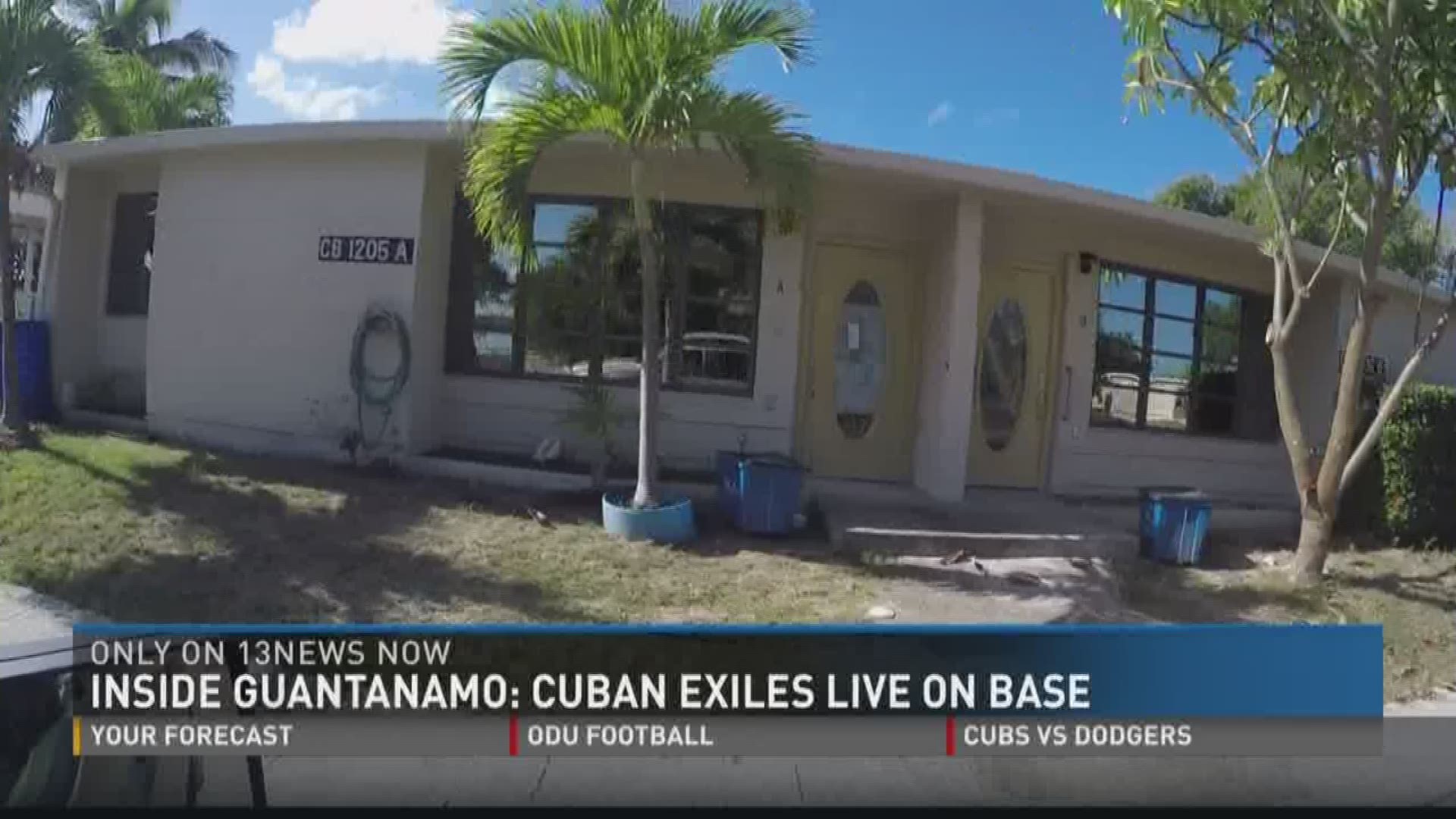You've probably heard a lot about Guantanamo Bay Naval Base in Cuba, because of suspected terrorists who are held there. 13News Now traveled to the base and learned it is about much more than what you might think in this five-part series.
Guantanamo Bay, Cuba - There is an area inside Guantanamo Bay Naval Base that looks more like a retirement community in Florida than a neighborhood firmly planted on land inside the communist nation of Cuba.
While it may not be unusual to see homes with neatly manicured lawns on a United States military installation, you might find it surprising that the community "Bargo Housing, Guantanamo" is home to nearly three dozen Cuban exiles.
"It's like a piece of Cuba for them," said Dana Lake. "(Many) got here very young and during the crisis."
Lake, deputy director of the Cuban Assistance Center on the naval base, helps to oversee the 31 remaining Cubans who fled the communist nation in 1959, when then leader Fidel Castro seized power from the US-backed Batista administration.
"(The Navy provides) for their sustenance, social being, well-being, for their medical and they're happy," Lake told us during an interview in Guantanamo in early October.
At the time, 400 Cubans flooded the base. Many gained U.S. citizenship and left for the states, while some have since passed away.
Those who remain still fear retaliation against their families who remained behind, and as a result, rarely speak to the media, which was no different during our trip to their community.
But in 2015, shortly after the Obama administration announced an effort to restore relations with Cuba, Roman Baudin did speak to the Wall Street Journal.
The oldest Cuban exile on base told the newspaper that he believes he would be killed if he returned to Cuba and the town of Caimanera, from which he escaped in 1961.
In a photograph that he posed for in the WSJ, Baudin clutches a small radio, the very same radio we witnessed him using during our meeting with Lake.
"Mr. Baudin is content doing what he does every day. Exercise, pray and listen to the radio, the Cuban news," Lake to us.
From the front porch of his mountainside home, Baudin can see Caimanera, get news updates on his radio, but will likely never return.
"They have the hope that one day they probably could return home," Lake said of the remaining exiles living on Guantanamo Bay. "They are very melancholy, they wish one of these days they could see this happening.
Separating the base from Cuba is a roughly 17-mile fence that is patrolled by U.S. Marines.
Marine Sergeant Joyuanki Victore took us on a tour of the closely guarded fence and North East Gate, the entrance to and from Cuba.
Victore, who is Cuban-born, fled the country with his family as a child and now lives on base with his wife and three children.
"I feel good, because now I get to show my kids what Cuba looks like," he told us.
Before the U.S. and Cuban normalized relations last year, both countries rarely spoke, but frequently spied on each other.
So you might be surprised to learn that Cubans who worked on the base before Castro seized power from the U.S.-backed Batista Administration were allowed to continue passing through these gates until the final two retired in 2012.
"There was a time when they used to tell us we were communists. Then we would get to the other side and they would call us imperialists. So, we weren't liked there (at Guantanamo Bay Naval Base) and we weren't liked here (in Guantanamo, Cuba). But with time they began to understand, we began to understand each other, and that it wasn't like that. We're neutral," said Luis La Rosa, one of the retiring Cubans, during a 2012 interview.
Since then, the North East Gate as remain closed to those venturing from the base and into Cuba, except to one person currently on base.
"We do have an agreement to support one another in the event of a catastrophe in the area," said Capt. David Culpepper, Commander of Guantanamo Bay Navy Base.
He and his predecessors have keep the lines of communications open with Cuban military, even when our respective governments continued to give each other the cold shoulder.
The commander told us, "We do have an agreement to support one another in the event of a catastrophe in the area."
The agreement includes treating injured Cubans at the Naval Hospital; one part of a plan that was nearly put into action while we were at the base in early October.
During that time, the naval base activated its emergency operations center when early forecasts project then-Hurricane Matthew would pass over the base at a Category 4 or 5 storm.
Hundreds of people were evacuated before the storm shifted further away, with the base suffering only minor damage.
Culpepper stressed that the meeting with Cuban officials, which also can include inviting his counterpart onto base for a meeting in the old Marine barracks a few yards from the North East Gate entrance, is not part of normalized relations.
"It's an effort to make sure that we have an effective ability to communicate and to maintain and calm, neutral relationship."

